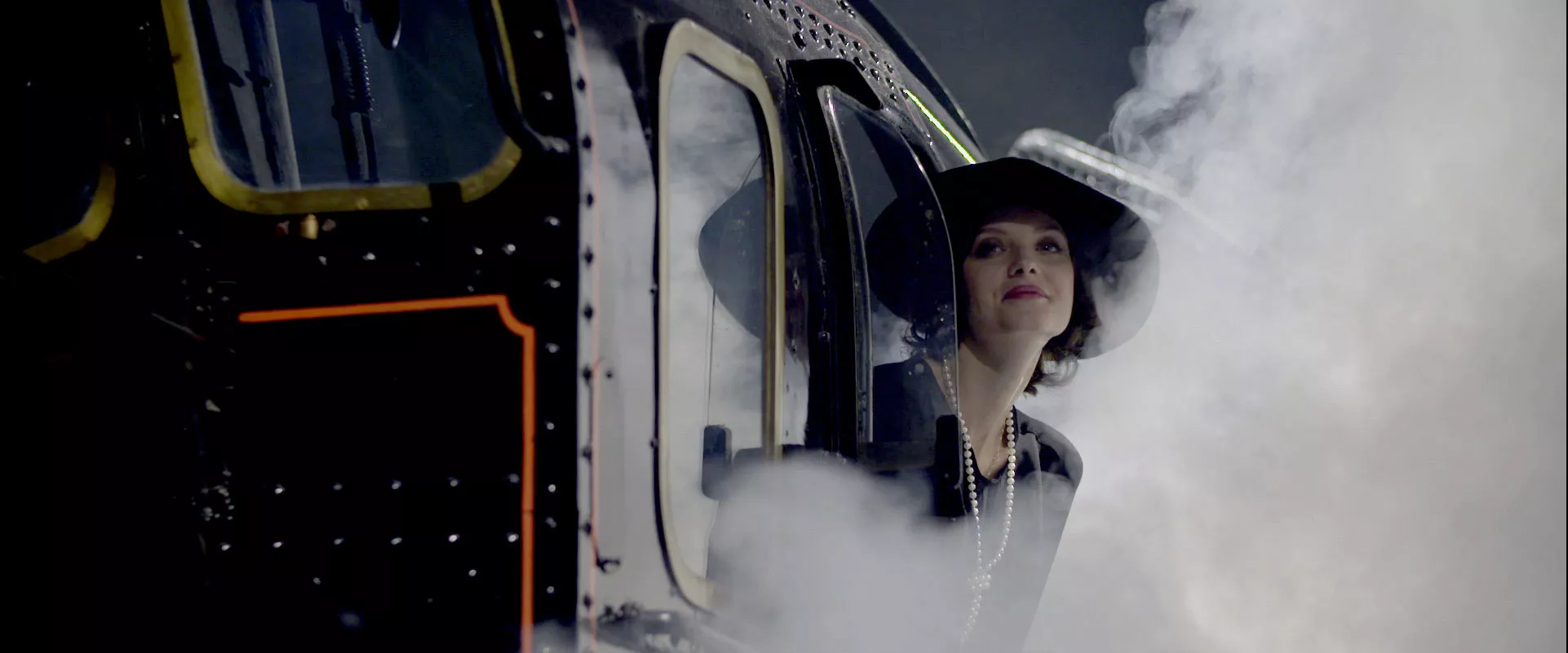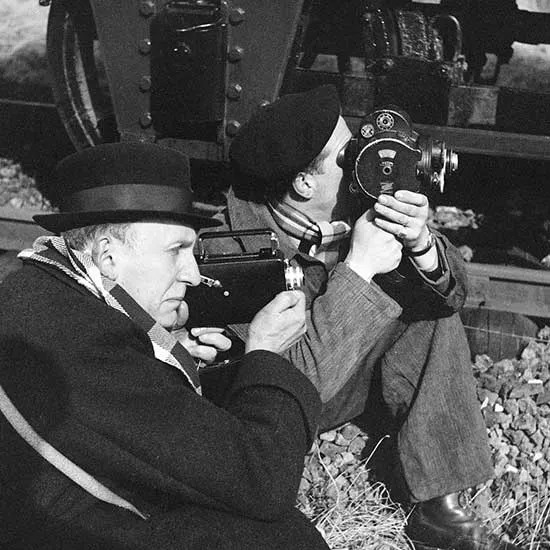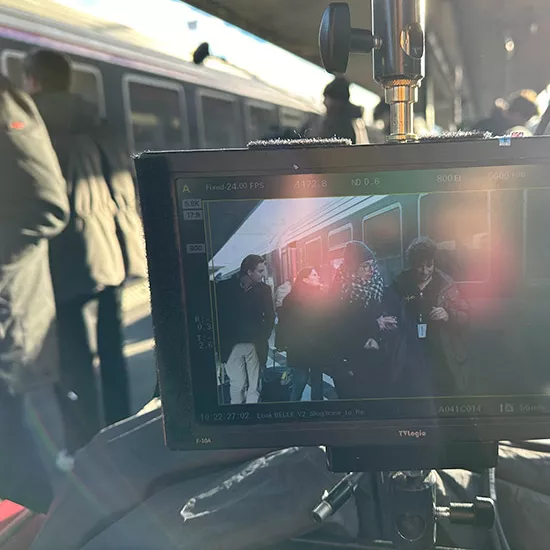
Trains & film—a love story
Rail and film share a timeless connection, and their enduring partnership has inspired any number of shots, scenes and scenarios. A look back at their historic, artistic and emotional legacy.
The most cinematic way to travel
From the Lumière brothers’ ground-breaking depiction of a train hurtling across the screen, railways have been a powerful cinematic force. The visual allure of tracks evokes both continuity and separation, while trains themselves embody strength and speed. In the 1930s, the advent of sound added the iconic train whistle and rhythmic chugging of cars down the line, further enriching their cinematic appeal. Film as an art form elevates every aspect of train travel, with each new work deepening the cultural resonance of railways in our collective imagination.
Endless inspiration
Every film needs a plot—a framework to anchor its narrative. And the confined setting of vintage train compartments provided a perfect setting for characters to meet, while tracks cutting through sprawling cities hinted at untold surprises and unseen adventures. Trains seamlessly carry viewers between cities, scenes and realities, offering fertile ground for storytelling. Not that trains in films are bound by realism; they are conduits for boundless imagination, transporting audiences to epic conquests, dramatic events, and the dreamlike vistas of CinemaScope’s endless plains.
Stories and histories
Train stations are the stage for countless human dramas—tearful reunions, final goodbyes, chance encounters at the ticket counter, and posters beckoning travellers to explore far-off destinations. These settings capture the full palette of human emotions. Occasionally personal tales merge with history writ large. One striking example is The Battle of the Rails, the story of the SNCF employees who resisted German forces in World War II. Trains and stations, in their ordinary and extraordinary moments, remain a timeless canvas for storytelling.
Silver screen tribute to railway resistance fighters
The Battle of the Rails takes us back to 1944, chronicling the heroic efforts of rail workers in the French resistance as they executed a pivotal operation—derailing a German armoured train. Initially conceived as a documentary on rail workers in the Coopérative Générale du Cinéma Français, the project sought to honour a group of resistance fighters with ties to the French Communist Party. Over time, it became a full-length feature film thanks to a partnership between members of the Résistance-Fer association and SNCF.
A box office hit
René Clément, a rising young director known for his 1942 film Ceux du Rail, was entrusted with the project. Most scenes were shot on location with unknown actors, railway employees as extras and no visual effects, using the resources SNCF provided to the director and his crew.
Released in February 1946 at a single theatre in Paris, the patriotic film met with immediate—and unexpected—success. It went on to feature at the first Tournoi International du Cinéma in Cannes (now known as the Cannes Film Festival) where it won the prestigious grand prize.
SNCF’s film division

Birth of the Cinematography Department
SNCF launched its Cinematography Department on 26 February 1942, creating a network of regional offices to distribute news reels and educational documentaries across the country.
Post-war filmmaking
In 1943, the department began producing films directly for SNCF and became the SNCF Central Cinematography Department. This was a milestone in French industry, as no company outside the military had created its own dedicated cinematography division.
The department gained momentum in 1944, launching a three-year campaign to document the massive post-war reconstruction of France’s rail network. Lucien Censier, who headed the unit from 1944 to 1969, saw film as “a marvellous way to bring the news to life and an unparalleled tool for education.”

A profusion of productions
In 1972, the Central Department merged with the Photography Department to become SNCF’s Audiovisual Centre (CAV). Directors like André Périé, Robert Legrand and Yves Clara made their mark on films produced between 1940 and 1970.

From film to video
In 1982, the Audiovisual Centre merged with the newly established Communications Department. With the advent of video technology, the department switched entirely to video production, which allowed it to produce many more films each year and explore a wider array of topics that SNCF marketing teams wanted to feature.

Our Cinéma & Tournages unit
SNCF’s trains and stations are now iconic backdrops for French cinema, hosting countless film shoots each year. On average, one in three French films includes a scene set in a railway environment. And no other company in France facilitates as many film productions as SNCF. Our Cinéma & Tournages unit specializes in helping filmmakers capture the perfect shot in stations or aboard trains.
SNCF, bringing emotions to life on screen
Share the article